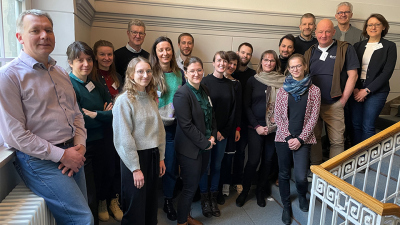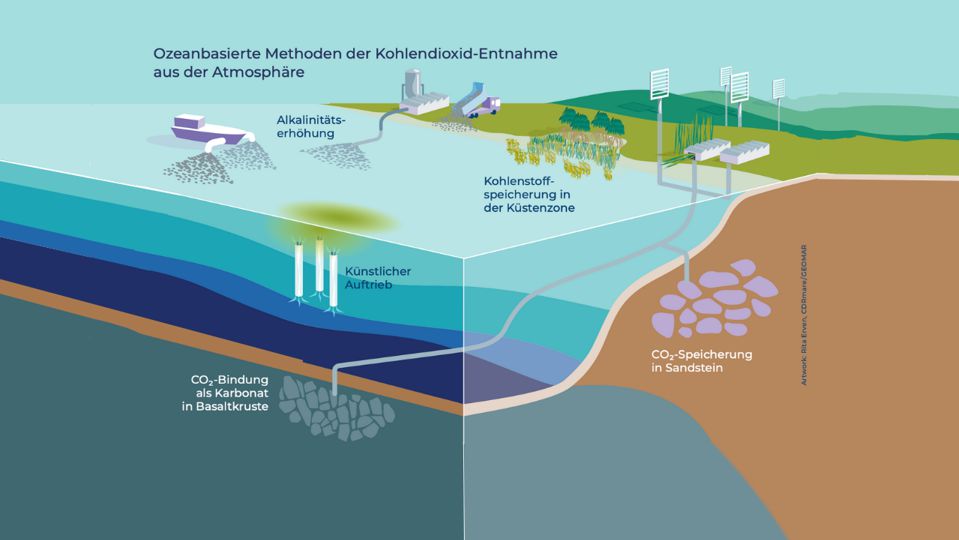- Home
- Discover
- Newsflashes
- AIMS3 evaluation
Is storing CO2 in the ocean crust feasible?
The scientific focus of the AIMS3 project is to assess the possibility of safe storage of CO2 previously captured at industrial plants in the oceanic crust. In the geochemical process, CO2 is precipitated with substances dissolved in seawater as carbonate and thus bound in the subsurface in the long term. By converting the greenhouse gas into rock, the renewed release of CO2 through leaks or other environmentally harmful effects are hardly to be expected. In contrast to comparable methods of CO2 fixation already used on land, AIMS3 focuses on the altered, permeable upper ocean crust, as these rocks have a huge theoretical potential to permanently store CO2 due to their high abundance beneath the global ocean.
The ASMASYS project has established a transdisciplinary assessment framework that provides public perception, ethical, political, legal, economic and environmental science aspects in the assessment of CDR projects. In Berlin, this was done for a specific hypothetical scenario where dissolved CO2 is to be injected on an industrial scale into vesicular, porous basalts in the Norwegian Sea. The project was assumed to run for ten years, with three phases monitoring the natural state (baseline study), perform CO2 injection, and carry out environmental monitoring of possible CO2 leaks from the seabed.
In a very efficient and productive atmosphere, the workshop enabled an intensive exchange between researchers from ASMASYS, invited representatives of the Federal Ministry of Economics and Climate Protection (BMWK), the Federal Environmental Agency (UBA), the Federal Maritime and Hydrographic Agency (BSH), representatives of NGOs and MARUM representatives from AIMS3. Despite a thorough examination of the economic and ethical feasibility, the possible legal restrictions or theoretical environmental incompatibilities, a scenario was found in which the simulated AIMS3 test case was classified as feasible in the future and highly attractive from a scientific point of view.
Achim Kopf and Nike Fuchs (both MARUM, coordinator and transfer officer in AIMS3 respectively) and Isabel Lange (PhD student of FB5 Geosciences in AIMS3) as well as Melanie Dunger (FB7 Economics, postdoc in AIMS3) took part from the University of Bremen.
Contact:
Achim Kopf
MARUM - Center for Marine Environmental Sciences at the University of Bremen
Email: [Bitte aktivieren Sie Javascript]
More information:
- Link to AIMS3: https://aims3.cdrmare.de/
- Link to ASMASYS: https://asmasys.cdrmare.de/
- Link to CDRmare https://cdrmare.de/
- Link to DAM https://www.allianz-meeresforschung.de/




